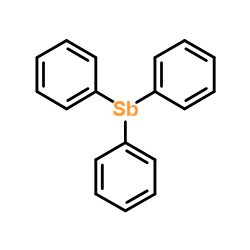Antimony

Antimony structure
|
Common Name | Antimony | ||
|---|---|---|---|---|
| CAS Number | 7440-36-0 | Molecular Weight | 121.76000 | |
| Density | 6.69 g/mL at 25 °C(lit.) | Boiling Point | 1950 °C(lit.) | |
| Molecular Formula | Sb | Melting Point | 630 °C(lit.) | |
| MSDS | Chinese USA | Flash Point | 1380°C | |
| Symbol |


GHS07, GHS09 |
Signal Word | Warning | |
| Name | Antimony |
|---|---|
| Synonym | More Synonyms |
| Density | 6.69 g/mL at 25 °C(lit.) |
|---|---|
| Boiling Point | 1950 °C(lit.) |
| Melting Point | 630 °C(lit.) |
| Molecular Formula | Sb |
| Molecular Weight | 121.76000 |
| Flash Point | 1380°C |
| Exact Mass | 120.90400 |
| InChIKey | WATWJIUSRGPENY-UHFFFAOYSA-N |
| SMILES | [Sb] |
| Water Solubility | INSOLUBLE |
CHEMICAL IDENTIFICATION
HEALTH HAZARD DATAACUTE TOXICITY DATA
|
| Symbol |


GHS07, GHS09 |
|---|---|
| Signal Word | Warning |
| Hazard Statements | H302 + H332-H411 |
| Precautionary Statements | P273 |
| Personal Protective Equipment | Gloves |
| Hazard Codes | Xn:Harmful |
| Risk Phrases | R20/22;R51/53 |
| Safety Phrases | S60-S61-S36/37/39-S26 |
| RIDADR | UN 3264 8/PG 2 |
| WGK Germany | 2 |
| RTECS | CC4025000 |
| Packaging Group | III |
| Hazard Class | 6.1 |
| Precursor 8 | |
|---|---|
| DownStream 8 | |
|
Treatment of air pollution control residues with iron rich waste sulfuric acid: does it work for antimony (Sb)?
J. Hazard. Mater. 248-249 , 159-66, (2013) Antimony (Sb) in air pollution control (APC) residues from municipal solid waste incineration has gained increased focus due to strict Sb leaching limits set by the EU landfill directive. Here we stud... |
|
|
Optimization of chemical and instrumental parameters in hydride generation laser-induced breakdown spectrometry for the determination of arsenic, antimony, lead and germanium in aqueous samples.
Anal. Chim. Acta 770 , 7-17, (2013) A laser induced breakdown spectrometry hyphenated with on-line continuous flow hydride generation sample introduction system, HG-LIBS, has been used for the determination of arsenic, antimony, lead an... |
|
|
Antimony toxicity.
Int. J. Environ. Res. Public Health 7(12) , 4267-77, (2010) Antimony toxicity occurs either due to occupational exposure or during therapy. Occupational exposure may cause respiratory irritation, pneumoconiosis, antimony spots on the skin and gastrointestinal ... |
| antimonyblack |
| MFCD00134030 |
| EINECS 231-146-5 |
| antimony metal |
| Stibium |
| Grey antimony |
| highpurity |
| Antymon |
 CAS#:7789-61-9
CAS#:7789-61-9 CAS#:10025-91-9
CAS#:10025-91-9 CAS#:7647-18-9
CAS#:7647-18-9 CAS#:7783-56-4
CAS#:7783-56-4 CAS#:7803-52-3
CAS#:7803-52-3 CAS#:7440-31-5
CAS#:7440-31-5 CAS#:7790-44-5
CAS#:7790-44-5 CAS#:6303-21-5
CAS#:6303-21-5 CAS#:7727-37-9
CAS#:7727-37-9 CAS#:7782-99-2
CAS#:7782-99-2 CAS#:603-36-1
CAS#:603-36-1 CAS#:92-52-4
CAS#:92-52-4 CAS#:7440-69-9
CAS#:7440-69-9 CAS#:217-59-4
CAS#:217-59-4
